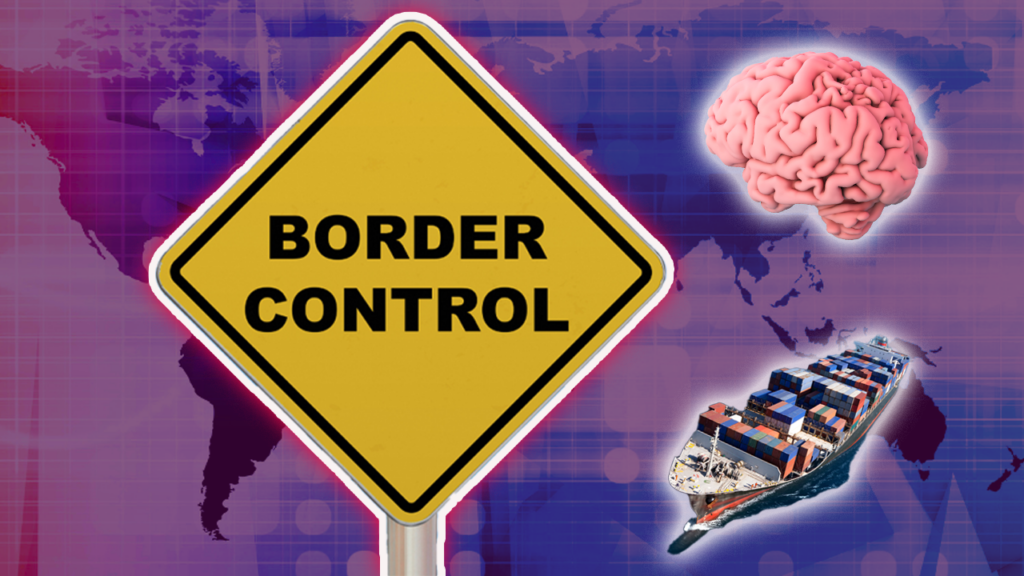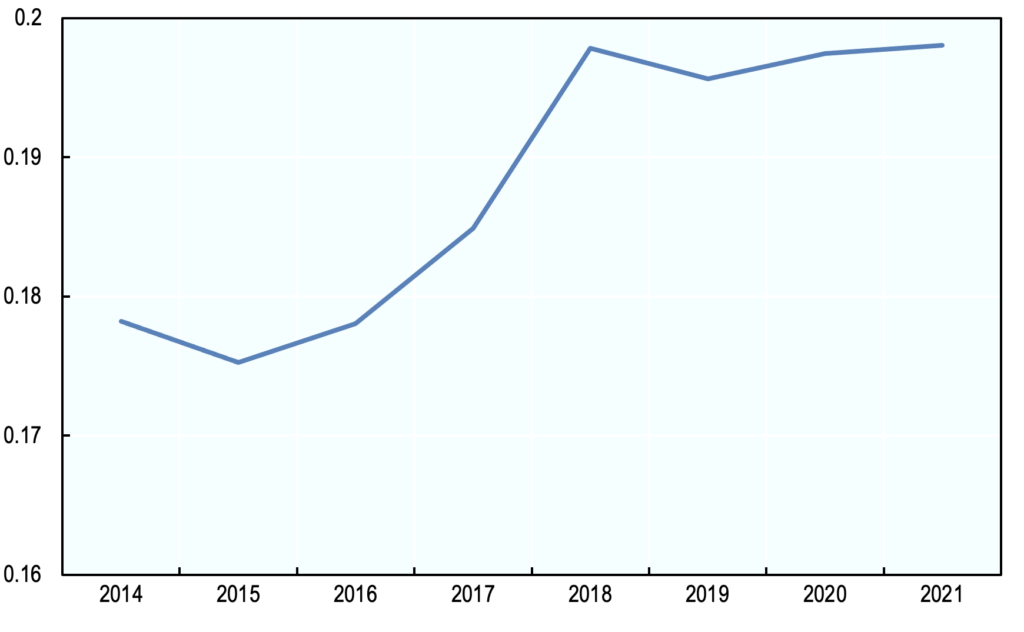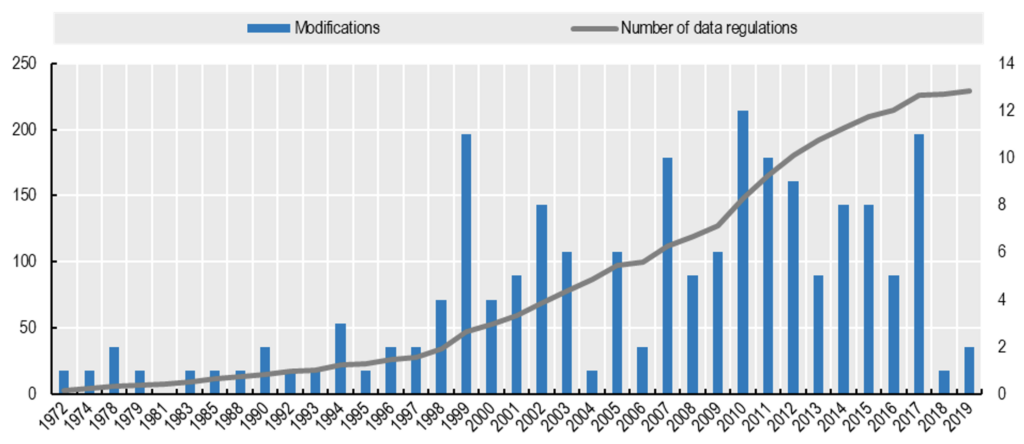AI needs the right trade policies to flourish

AI is already affecting international trade by enabling faster and more accurate predictions and recommendations, and even automating some transactions. For example, AI systems optimise warehouse usage by predicting demand, improving supply chain efficiency and helping deliver parcels to our doorsteps in record time.
When it comes to cross-border communications, developments in natural language processing improve translation processes, which helps to overcome language barriers and allows sellers and buyers from different countries to communicate easier.
As trade’s reliance on AI grows, so does AI’s reliance on appropriate trade policies, making the relationship between the two mutually beneficial. Here is why.
Trade matters at every step of the AI lifecycle
AI is a growing part of trade discussions, including in the context of new digital economy agreements. For instance, the 2020 Australia-Singapore Digital Economy Agreement and the Digital Economy Partnership Agreement between Chile, New Zealand and Singapore both recognise the need to develop ethical governance frameworks for the trustworthy, safe and responsible use of AI technologies. These provisions are in line with international instruments such as the OECD AI Principles.
The inclusion of these provisions not only reflects the signatories’ commitment to the OECD AI Principles. It also shows that they believe well-designed trade policies can boost AI innovation and uptake. Beyond these provisions, access to the necessary hardware, software, knowledge and data that AI systems need to operate depends upon trade policies. This is true across all steps of an AI system’s lifecycle, from design to verification, deployment and operation.
Fewer tariffs on goods would mean better access to hardware
The successful development, deployment and implementation of AI systems rely on access to hardware, including high-performance computing equipment, data sensors, communication units and adequate network equipment. But tariffs on essential Information and Communication Technology (ICT) goods remain high and inflate costs. While international agreements have tried to eliminate tariffs, including through the WTO Information Technology Agreement, many countries still apply them, particularly in developing and emerging economies.
Restrictions on services hinder AI use and innovation
Fewer trade barriers would improve access to hardware but there is more that could be done. ICT services such as telecommunications and computer services play the fundamental role in establishing the networks to develop AI systems. Moreover, services markets provide channels where businesses monetise AI technologies.
Unfortunately, evidence from the OECD Digital Services Trade Restrictiveness Index (STRI) shows that barriers to digital trade remain high globally and have increased in recent years, with the DSTRI increasing by 11% since 2014 (Figure 1). These barriers press hard on companies, especially smaller ones with fewer resources to meet cumbersome regulatory standards that diverge across jurisdictions.
Figure 1 – Trade barriers affecting AI are on the rise
OECD Digital Services Trade Restrictiveness Index (STRI) averages across time

Source: OECD Digital STRI (2021)
Not all intelligence is artificial
Knowledge-intensive fields such as AI need specialised expertise to design and code the models and algorithms that underpin AI operations. The easier experts can travel across countries, the easier companies can access the best data scientists. While knowledge-sharing services can easily be delivered over digital networks, performing tasks related to the installation and maintenance of AI systems often requires technical experts to be physically present. Trade and migration policies play a substantial role in enabling the cross-border flow of AI talent, skills and knowledge, especially when moving into developing countries where expertise is in shorter supply.
Despite the growing need for these skills, entry conditions for AI professionals are complicated by the requirement to demonstrate a lack of local labour supplies and burdensome application procedures. Issues also arise when permission to stay in a country is only granted for a short period, complicating the execution of long-term projects.
Some AI experts cannot work in some countries because their engineering professions require national licencing. If destination countries were more willing to recognise foreign qualifications and eased requirements related to local qualifications (e.g., on local examinations) it would enable easier market access to highly skilled AI experts.
Cross-border data flows are the main ingredient of AI’s success
As the raw material used to train algorithms, data is the lifeblood of AI systems. By itself, data is useless. It only becomes valuable when it is processed through software, hardware and human expertise to inform or automate actions. Beyond the volume of data, veracity and variance are also key. Data-intensive AI systems perform best when they have access to large and varied datasets, something that often involves gathering data from a number of countries.
Despite this, the emerging landscape for data and cross-border data flows is becoming more complex. Concerns about privacy protection, cybersecurity, national security, regulatory reach, competition and industrial policy have led to growing data regulation (Figure 2). These regulations either condition the transfer of data abroad or require data to be stored domestically (Casalini and López González, 2019).
Figure 2 Regulation affecting the movement of data across borders is on the rise

While there are legitimate reasons for cross-border data regulation, the diversity of existing approaches affects the ability of firms to access the data they need to efficiently deploy AI solutions (Casalini, López González and Nemoto, 2021). In some cases, it will imply duplicating activities across regions. Beyond higher costs for firms, this may also mean that AI systems could be less precise due to limited access to bigger and more diverse datasets. Fragmented cross-border data regulation could stall the delivery of the promised benefits of AI, including those related to trade.
AI governance needs trade policy
AI matters for trade because it can lead to greater productivity, better supply chain management and lower trade costs. At the same time, trade and trade policy matter for the diffusion of AI systems because they enable access to goods, services, people and data.
Trade policy makers play a critical role in fostering a regulatory environment that allows more AI innovation and use. International efforts to develop a governance framework for AI, whether at the OECD or elsewhere, need to involve the trade community to achieve coherent and complementary policies that foster the responsible and human-centric evolution of AI technologies.



































